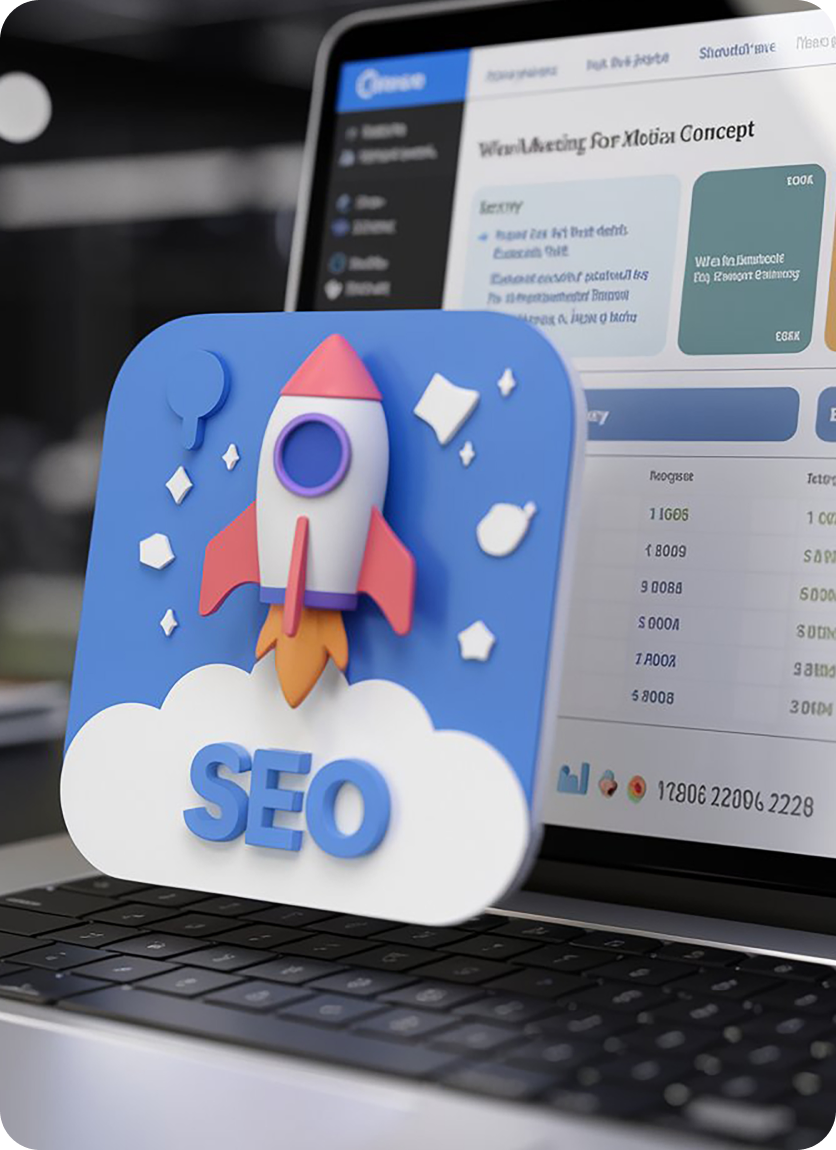Introduction
Welcome! If you’re here, chances are you’re curious about how digital marketing and SEO dance together to help businesses thrive in the online universe. Picture them as partners at a grand ball, each bringing their own unique strengths to the floor—together, they create a symphony that can lead to incredible business growth.
Understanding the intricate relationship between digital marketing and SEO (Search Engine Optimization) is crucial. They don’t just coexist; they complement each other in ways that can skyrocket your online visibility and sales. In this blog post, we’re diving headfirst into how these two powerhouses work together to transform your online presence.
Section 1: Understanding Digital Marketing
A. Definition of Digital Marketing
Let’s start with the basics—what is digital marketing, anyway? In a nutshell, digital marketing refers to any marketing efforts that occur through digital channels. Just think of it as the umbrella under which all online promotion operations fall.
1. Overview of Digital Channels
From social media platforms like Instagram and Facebook to email campaigns and websites, digital marketing spans a multitude of avenues. It shines a spotlight on your brand, ensuring you connect with potential customers where they spend a significant chunk of their time—online!
2. Key Objectives of Digital Marketing
Digital marketing isn’t just about shouting your brand’s name into the void. It’s about achieving specific goals, like boosting brand awareness, generating leads, increasing sales, and fostering customer loyalty. In short, it’s about driving action in a way that resonates with your audience.
B. Components of Digital Marketing
Digital marketing can be broken down into several key components. Let’s take a closer look at what makes it tick:
1. Content Marketing
Think of content marketing as the heart of your digital efforts. By creating and distributing valuable content (like blogs, videos, infographics, and eBooks), you can attract and engage your target audience.
2. Social Media Marketing
This component is all about building relationships. Through platforms like Twitter, LinkedIn, and Pinterest, you can connect directly with your audience and build a community around your brand.
3. Email Marketing
Email marketing is like a personal letter to your customers. It allows you to communicate directly and provide tailored content that encourages conversions.
4. Pay-Per-Click Advertising
With PPC, you pay for every click that directs traffic to your website. It’s a way to gain immediate visibility in search engines or on social media, often providing quick returns.
5. Affiliate Marketing
This strategy involves partnering with other marketers or influencers to promote your products. It’s a great way to reach wider audiences while leveraging the credibility of others.
Section 2: Understanding SEO (Search Engine Optimization)
A. Definition of SEO
Now that we’ve got digital marketing down, what about SEO? Think of it as the behind-the-scenes wizardry that helps rack up your site’s visibility on search engines like Google.
1. Explanation of Search Engines and Their Function
Search engines are like the universe’s gatekeepers, tirelessly working to provide users with the most relevant results for their inquiries. By optimizing your site for these engines, you get a ticket to appear in their coveted results.
2. Importance of Visibility in Search Engine Results
Why is SEO important? Well, simply put, the higher you rank on search engine results pages (SERPs), the more organic traffic you attract. And who doesn’t want a steady stream of visitors without breaking the bank on ads?
B. Key Components of SEO
To unlock the magic of SEO, you need to understand its vital components:
1. On-Page SEO
On-page SEO focuses on optimizing individual pages on your site. From keyword targeting to meta tags and content optimization, it’s all about making your site as appealing and relevant to search engines as possible.
2. Off-Page SEO
Off-page SEO involves tactics outside your website to influence your rankings. Think backlinks from reputable sites and social signals—these help boost your credibility in the eyes of search engines.
3. Technical SEO
This is the geeky aspect of SEO that ensures your site is optimized for crawling and indexing. It involves factors like site speed, mobile-friendliness, and security.
Section 3: The Interconnection Between Digital Marketing and SEO
A. How Digital Marketing Drives SEO
Now that we’ve explored each component separately, let’s investigate how they work together.
1. Content Marketing and Its Role in SEO
High-quality content isn’t just for show. It’s the backbone of your SEO strategy. When you create insightful, engaging content, it drives traffic, encourages sharing, and naturally incorporates keywords that help you rank better.
2. Social Media’s Impact on SEO Visibility and Backlinks
Social media platforms are like megaphones for your content. When people share your posts, it generates traffic and can lead to backlinks, which are gold stars in the SEO world.
3. Paid Advertising and Its Influence on Organic Search Data
Think of paid ads as a shortcut to visibility. They can also provide insights into what keywords or messages resonate with your audience, informing your organic SEO strategy.
B. How SEO Enhances Digital Marketing Efforts
Conversely, SEO isn’t just a one-way street; it significantly enhances your digital marketing efforts too.
1. Optimizing Landing Pages for Better Conversion Rates
With SEO, well-optimized landing pages can convert visitors into leads. The more tailored your content is to what searchers are looking for, the more likely they are to take action.
2. Understanding Customer Search Behavior to Tailor Digital Campaigns
SEO data can unveil a treasure trove of information about your audience’s search behavior. By utilizing this data, you can refine your digital marketing campaigns to align with what your customers truly seek.
3. Long-term Cost Effectiveness of SEO in Digital Marketing Strategies
One of the best things about SEO is its long-term cost-effectiveness. Unlike paid ads that stop driving traffic the moment you stop paying, a well-optimized site continues to attract visitors over time, providing long-lasting returns.
Section 4: Best Practices for Integrating Digital Marketing and SEO
A. Creating SEO-Friendly Content
1. Keyword Research and Targeting
Start by understanding what your audience is searching for. Incorporate those keywords thoughtfully into your content without sacrificing quality or readability.
2. Creating Valuable and Shareable Content
While keywords are important, content quality takes center stage. Create content that genuinely helps your audience solve problems and is share-worthy.
B. Leveraging Social Media for SEO
1. Promoting Content through Social Channels
Use your social media platforms to share your content far and wide. The more eyes on your content, the greater the chances of garnering backlinks.
2. Engaging Audiences to Build Backlinks
Engagement is key! The better your audience responds to your content, the higher the chance they will link back to it from their own sites or social media.
C. Analyzing Metrics to Optimize Efforts
1. Using Tools Like Google Analytics to Track Performance
Regularly analyze your performance metrics to understand what’s working and what’s not. Google Analytics is a treasure trove of data waiting to be mined.
2. Adjusting Strategies Based on Data Insights
Once you understand your metrics, don’t be afraid to pivot. Use your data insights to refine your strategies and keep improving.
Section 5: Real-World Examples of Successful Integration
A. Case Study: A Brand’s Journey in Combining SEO and Digital Marketing
Let’s look at a brand that hit the sweet spot by seamlessly integrating their digital marketing and SEO efforts. Imagine Brand X, which started a blog to share valuable content related to its products. Over time, this attracted traffic via organic search, complemented by a social media campaign showcasing that same content.
B. Lessons Learned from Successful Brands
1. Strategies That Worked
These brands didn’t just stick to one play. They explored multiple channels—like pairing content with social sharing and email marketing—to create a holistic approach.
2. Common Pitfalls to Avoid
Many brands falter by neglecting a cohesive strategy. If your digital marketing and SEO efforts aren’t aligned, you’ll waste time and resources. Ensure your messages aren’t at odds and work together toward common goals.
Conclusion
In conclusion, digital marketing and SEO are not just two distinct strategies floundering in the vast ocean of the internet; they are intricately intertwined, working harmoniously like a well-oiled machine. Understanding their relationship is key to elevating your business in the digital space.
Now is the time to take action! Evaluate your current digital marketing strategies in light of SEO best practices and watch how the synergy can transform your online presence. Have any experiences or tips on integrating these two areas? I’d love for you to share your thoughts in the comments!
Additional Resources
Ready to dive deeper? Here are some fantastic resources to sharpen your digital marketing and SEO skills:
– Tools for SEO and Digital Marketing: Check out SEMrush, Ahrefs, and HubSpot.
– Articles and Guides for Further Reading: Search Engine Journal, Neil Patel’s Blog, or Moz.
– Stay Updated: Subscribe to our newsletter for the latest tips and tricks!
Call to Action
If you found this article helpful, why not share it with your colleagues or on social media? Let’s get the conversation going—your insights matter, and together we can elevate the world of digital marketing and SEO!











